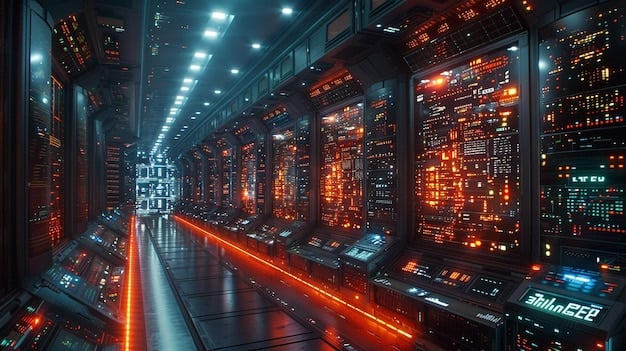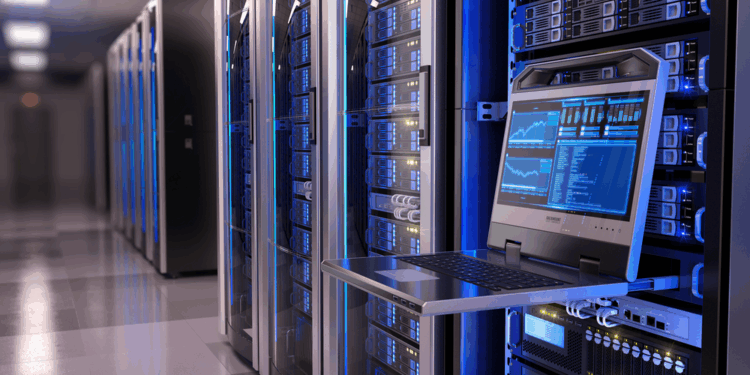In the relentless march of technological progress, the hardware you purchase today can seem outdated in just a few short years. This rapid obsolescence is a significant challenge for businesses and individuals who want to build a stable and long-lasting digital infrastructure. The concept of “future-proofing” your server setup is not about finding a magic bullet or buying the most expensive hardware on the market. Instead, it is a strategic approach—a mindset that prioritizes flexibility, scalability, and resilience over sheer raw power. A future-proof server is one that can adapt to changing needs, accommodate new technologies, and continue to perform reliably for many years, all without requiring a complete and costly overhaul.
This comprehensive guide will provide a detailed roadmap for creating a server setup that is truly built to last. We will explore the critical hardware components to invest in, the transformative role of software in enabling long-term adaptability, and the essential strategic planning that extends beyond the physical server itself. By understanding and implementing these core principles, you can construct an IT foundation that not only meets your current needs but is also poised to support your growth and technological evolution for a decade or more.
The Core Principles of Future-Proofing

Before we dive into specific hardware and software, it’s crucial to understand the foundational principles that define a future-proof server strategy.
A. Modularity and Scalability: A future-proof server must be built on a modular platform. This means that its key components—CPU, RAM, and storage—can be easily upgraded, replaced, or expanded as your needs grow. This allows you to add more power or capacity without having to replace the entire system, saving you a significant amount of money and effort over the long term.
B. Redundancy and Resilience: A server that is not designed to handle component failure will inevitably become a liability. A resilient server has redundant components, ensuring that if one part fails (e.g., a hard drive or a power supply), another can seamlessly take over, preventing catastrophic downtime and data loss. This is the ultimate form of future-proofing against the unpredictable nature of hardware.
C. Embracing Software-Defined Infrastructure: The modern server is not a single, static entity. It is a dynamic platform that can be shaped and managed by software. By embracing technologies like virtualization and containerization, you can abstract your applications from the underlying hardware. This makes your infrastructure incredibly flexible, allowing you to move workloads, deploy new services, and utilize resources far more efficiently.
D. Forward-Looking Connectivity: The server needs to be able to communicate effectively with the rest of your network and the outside world. Planning for future bandwidth needs is crucial. A server with high-speed networking capabilities ensures it won’t become a bottleneck as your business’s data transfer needs increase.
Future-Proofing Server Hardware
The hardware you choose is the physical foundation of your server setup. Making smart, long-term decisions here is the first and most important step.
A. The Chassis and Form Factor:
The server case is the skeleton of your setup. A future-proof chassis should have:
- Ample Drive Bays: The most common reason for a server upgrade is running out of storage. A chassis with a large number of hot-swappable drive bays ensures you can easily add more storage as your data grows. Look for a chassis with at least 8 or 12 bays.
- Room for Expansion: Ensure the chassis has plenty of space for additional components like network cards, RAID controllers, or a dedicated GPU for AI workloads.
- Proper Cooling: A chassis with excellent airflow and fan configuration will keep components cool, extending their lifespan and ensuring consistent performance.
B. The Motherboard and Chipset:
The motherboard is the nervous system of your server. It is arguably the hardest component to replace, so choosing wisely is critical.
- CPU Socket Longevity: Select a motherboard with a CPU socket that supports multiple generations of processors. This allows you to upgrade the CPU in a few years without having to buy a new motherboard.
- I/O Connectivity: Look for a motherboard with a high number of PCIe lanes. This ensures you can add multiple high-speed components like NVMe drives, 10GbE network cards, or a GPU without causing a performance bottleneck.
- RAM Slots: A high number of RAM slots is essential. You can start with a lower amount of RAM and easily add more later without having to replace existing memory modules.
C. The CPU: Investing for the Long Haul:
The CPU is the brain, but buying the absolute fastest one right now is not the best future-proofing strategy.
- Core Count Over Clock Speed: In a server environment, the ability to handle many concurrent tasks (e.g., multiple virtual machines) is more important than the single-core speed. Choose a CPU with a generous number of cores and threads.
- Generational Upgrade Path: As mentioned with the motherboard, select a CPU from a platform that has a clear upgrade path for future generations of the same socket.
D. Memory (RAM): Room to Grow:
Memory is a frequent upgrade, so a future-proof setup must make it easy.
- More Slots, Not Just More RAM: Start with a minimum of 16GB, but ensure your motherboard has at least 8-12 RAM slots. This allows you to upgrade to 64GB, 128GB, or more simply by adding new modules, rather than having to replace all the existing ones.
- ECC RAM: This is a non-negotiable for a server. ECC (Error-Correcting Code) RAM detects and corrects single-bit memory errors, preventing data corruption and system crashes. It is a critical investment in your data’s long-term integrity.
E. Storage: Capacity, Speed, and Flexibility:
Your storage solution is where all your data lives, and it’s where future-proofing has the most significant impact.
- Hybrid Storage Strategy: Use a hybrid approach for a balance of speed and capacity. A fast NVMe SSD should be used for the operating system and critical applications, while high-capacity, cost-effective HDDs should be used for bulk data storage.
- Hot-Swappable Drive Bays: These are a must. They allow you to add, remove, or replace hard drives without having to shut down the server, a critical feature for a server that needs to run 24/7.
- RAID (Redundant Array of Independent Disks): RAID is the ultimate form of future-proofing against drive failure. RAID 5 or RAID 6 configurations are highly recommended as they provide data redundancy, ensuring your data is safe even if a drive fails. A RAID controller is a crucial investment that can be easily added to a modular system.
F. Power Supply and Cooling:
A server’s lifespan is directly tied to the quality of its power and cooling.
- Redundant Power Supplies: For a server that needs to be always on, a redundant power supply is non-negotiable. If one power supply fails, the second one will instantly take over, preventing downtime.
- Optimal Cooling: Good airflow and cooling prevent components from overheating, which can lead to premature failure.
The Role of Software in Future-Proofing

Hardware is only half the battle. Your software choices can provide the flexibility needed to adapt to future demands.
A. Virtualization (VMs): The Ultimate Flexibility:
Virtualization is the process of creating multiple virtual servers on a single physical machine.
- Resource Optimization: You can run a separate virtual machine (VM) for your file server, another for your web server, and a third for your email server—all on the same physical box. This allows you to scale your services without needing to buy new hardware for each one.
- Simplified Management: Virtualization makes it incredibly easy to manage, back up, and migrate your services, providing a layer of abstraction between your applications and the physical hardware.
B. Containerization (Docker/Kubernetes): The Modern Standard:
Containers take the concept of virtualization a step further. They package an application and all its dependencies into a single, portable unit.
- Portability: A containerized application can run on any server, whether it’s on-premise or in the cloud, without any changes. This provides unparalleled flexibility and is the key to a future-proof hybrid or cloud-based strategy.
- Scalability: Container orchestration platforms like Kubernetes allow you to automatically scale your application up or down as needed, a crucial feature for handling unpredictable workloads.
C. The Operating System (OS): Open-Source for Longevity:
Choosing a free, open-source server operating system like Linux is a key future-proofing strategy.
- No Licensing Costs: This frees up your budget for hardware upgrades.
- Community and Longevity: Open-source projects have a massive community that ensures they are continuously updated, secured, and supported for years to come. You are not tied to a single vendor’s product cycle.
The Strategy Beyond the Hardware
A future-proof server is part of a larger, well-thought-out IT strategy.
A. A Scalable Network:
Your server’s performance is limited by its network connection. Invest in a network switch that can handle high-speed connections and ensure your server has a network card that supports 10GbE or higher. This will prevent your network from becoming a bottleneck as your data transfer needs increase.
B. Robust Backup and Disaster Recovery:
The ultimate form of future-proofing is ensuring you can recover from a disaster. A robust backup strategy is non-negotiable. The industry standard is the 3-2-1 backup rule:
- 3 copies of your data.
- Stored on 2 different media types (e.g., hard drives and cloud storage).
- With at least 1 copy stored offsite.
C. Cloud Migration Planning:
A future-proof server setup should be a foundation for a potential cloud migration. By using technologies like virtualization and containerization, you can create an on-premise environment that is easy to transition to a public cloud provider like AWS or Azure when the time is right.
Conclusion
In the end, future-proofing your server setup is a holistic and continuous process, not a one-time purchase. It is a strategic investment that allows you to build a living infrastructure—a dynamic system that can grow, adapt, and evolve alongside your business. The era of static, monolithic servers is over. The future belongs to modular, resilient, and software-defined platforms that can be shaped to meet any demand.
By carefully selecting a chassis with room for expansion, choosing a motherboard that supports an upgrade path, and prioritizing components like ECC RAM and hot-swappable drives, you are building a server that is fundamentally upgradeable. This initial strategic investment in quality and adaptability will save you from the costly and time-consuming process of replacing your entire system every few years. The power of virtualization and containerization further enhances this strategy, providing a software layer that makes your applications portable, scalable, and independent of the physical hardware. This separation is the true key to longevity, allowing you to seamlessly add new services, scale your operations, and even migrate to the cloud without disrupting your business.
Ultimately, the most important element of future-proofing is your mindset. It requires you to think in terms of resilience, redundancy, and strategic foresight. It’s about creating an infrastructure that not only works flawlessly today but also provides a stable, secure, and flexible foundation for the unpredictable demands of tomorrow. By following the principles and strategies outlined in this guide, you are not just building a server; you are constructing a secure, scalable, and intelligent digital command center that will be a cornerstone of your success for decades to come.








